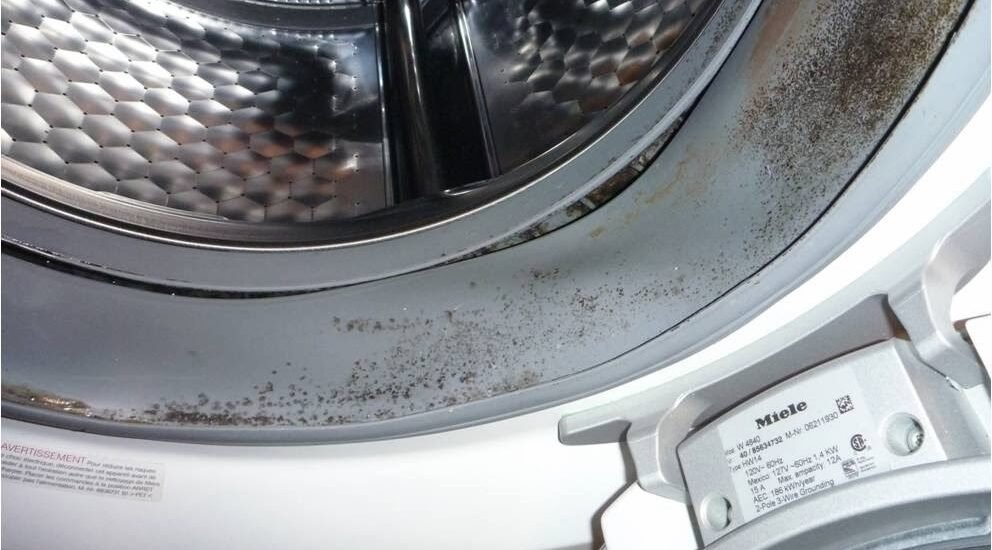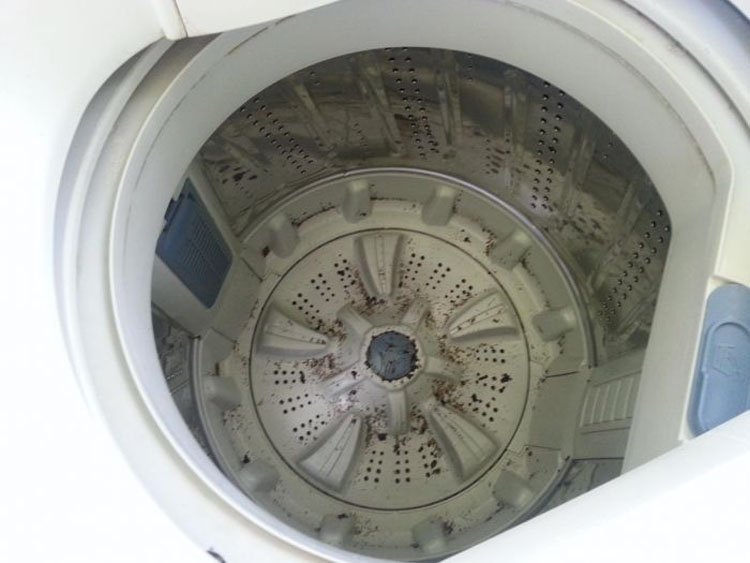Washing machines are designed to clean and sanitise our clothes, but what happens when the machine itself becomes a breeding ground for mould? Black mould in washing machines is a serious issue that many households face without even realising the dangers it brings. If ignored, it can harm your health, ruin your clothes, and even indicate larger property problems that may need action.
In this guide, we will explore how black mould forms, why it is dangerous, how to remove it properly, and how to prevent it from returning. If you are renting and your landlord has failed to address mould issues, you may even have grounds for a housing disrepair claim.
What Is Black Mould?
Black mould (scientifically known as Stachybotrys chartarum) is a type of toxic fungus that thrives in damp, warm, and poorly ventilated environments. While it is most commonly associated with walls, ceilings, and bathrooms, black mould can easily develop inside washing machines where moisture and detergent residue provide the perfect conditions for growth.
Black mould produces allergens, irritants, and potentially toxic substances called mycotoxins. Exposure to black mould spores can trigger a range of health issues, particularly in individuals with weakened immune systems, allergies, or respiratory conditions.
How Does Black Mould Get Into Washing Machines?
Several factors can cause black mould to develop inside washing machines, especially in front-loading models where water can pool around door seals and internal components.
Here are the main causes:
-
Residual moisture: Leftover water in the drum, pipes, or rubber seals provides an ideal environment for mould growth.
-
Detergent and fabric softener buildup: Soap residues can trap moisture and create a food source for mould.
-
Lack of ventilation: Keeping the washing machine door closed after use traps humid air inside.
-
Washing at low temperatures: Frequent low-temperature washes fail to kill bacteria and mould spores.
-
Irregular maintenance: Not regularly cleaning the detergent drawer, drum, and seals encourages mould colonisation.
If left untreated, mould can quickly spread and contaminate your laundry and your home environment.
Why Is Black Mould in Washing Machines Dangerous?
1. Health Risks from Mould Exposure
The health dangers of black mould should never be underestimated. Even limited exposure can trigger serious reactions in some individuals.
Common health effects include:
-
Respiratory problems such as coughing, wheezing, and shortness of breath
-
Asthma attacks or worsening of asthma symptoms
-
Allergic reactions like sneezing, a runny nose, and skin rashes
-
Chronic sinus infections and throat irritation
-
Eye irritation (itchy, red, watery eyes)
-
Fatigue and headaches
According to NHS guidance, mould spores can pose a particular danger to:
-
Infants and young children
-
Elderly individuals
-
People with weakened immune systems
-
Individuals with chronic respiratory illnesses such as COPD or asthma
If you are suffering health problems due to mould, contact our Housing Disrepair Team for advice.
2. Risk of Secondary Contamination
Clothing washed in a machine contaminated with black mould can absorb spores, which can then transfer to other surfaces in your home. Wearing contaminated clothes can also directly expose you to health risks.
If you notice mouldy smells on your freshly washed clothes or recurring respiratory symptoms, your washing machine could be the hidden culprit.
Also Read: How to Remove Black Mould from Silicone Sealant
Signs of Black Mould in Your Washing Machine
It’s not always easy to spot black mould straight away. Look out for these warning signs:
-
A musty or damp smell coming from the machine
-
Visible black or greenish spots around the rubber door seal
-
Mould growth inside the detergent drawer
-
Discolouration around the drum or glass door
-
Clothes coming out of the machine smell bad even after washing
Regular inspections and cleaning are essential to catch mould growth early before it becomes a serious problem.
Can Black Mould Affect Your Clothes?
Yes, absolutely. Black mould can cling to fabrics during the wash cycle, even if you use detergent or fabric softener. The spores can then be inhaled when you wear the clothes, increasing your exposure to harmful allergens and toxins.
Mould can also:
-
Leave unpleasant odours in your laundry
-
Cause permanent stains and fabric damage
-
Reduce the lifespan of your clothing
Washing clothes in a mouldy machine negates the very purpose of washing—to clean and sanitise your garments.
Step-by-Step Guide to Remove Black Mould from Your Washing Machine
If you suspect or detect black mould in your washing machine, take immediate action to clean it thoroughly.
1. Clean the Rubber Door Seal
-
Gently pull back the rubber seal to expose hidden mould spots.
-
Wipe down with a cloth soaked in white vinegar or bleach solution.
-
Use an old toothbrush to scrub stubborn patches.
2. Clean the Detergent Drawer
-
Remove the detergent drawer and soak it in hot water mixed with white vinegar.
-
Scrub off any mould buildup with a soft brush.
3. Run a Hot Cleaning Cycle
-
Run an empty cycle at the hottest temperature possible (90–95°C).
-
Add a cup of white vinegar or a specialised washing machine cleaner to the drum.
4. Wipe Down the Drum and Door
-
After the cleaning cycle, wipe the drum and door with a clean, dry cloth to remove any remaining moisture.
5. Leave the Door Open
-
Always leave the washing machine door open after each use to allow air circulation and prevent mould buildup.
Note: If the mould is severe or keeps returning, professional cleaning or inspection may be necessary. Also read: How to Damp Proof a Wall
How to Prevent Black Mould from Coming Back
Prevention is key to avoiding future mould infestations in your washing machine.
Here are effective tips:
-
Leave the door and detergent drawer open after every wash.
-
Run a maintenance cleaning cycle once a month with hot water and vinegar.
-
Use the right amount of detergent—too much soap leads to residue buildup.
-
Regularly clean and dry the rubber seals, detergent drawer, and the inside of the drum.
-
Check and clear any blockages in the drain filters.
-
Avoid overloading the machine, as packed loads can trap moisture.
By maintaining your washing machine properly, you can keep it mould-free and extend its lifespan.
When Should You Contact a Professional for Black Mould Removal?
If:
-
The mould is widespread and deeply ingrained in the machine
-
You experience recurring mould problems despite cleaning
-
There are signs of mould spreading into your kitchen or laundry area
-
You or your family experiences persistent health problems
Then it’s time to seek professional help.
Professional mould cleaning services can fully sanitise the machine, restore hygiene standards, and prevent future issues.
If you are a tenant and the mould is due to property disrepair (e.g., poor ventilation, leaks), you may also be able to make a housing disrepair claim against your landlord.
Is Black Mould a Sign of Housing Disrepair?
Yes. In rental properties, persistent mould problems can indicate housing disrepair.
Landlords have a obligation to maintain proper living conditions, which includes preventing and addressing damp and mould issues.
If you have:
-
Report the mould to your landlord
-
Given them a reasonable amount of time to fix it
-
And the mould remains or worsens
you may be entitled to claim compensation under housing disrepair laws.
At Housing Disrepair Team, we help tenants across the UK fight back against negligent landlords.
If you are suffering from mould issues, contact us today to explore your right to claim.
Start your No Win, No Fee housing disrepair claim now.
Please Note: The solicitor we recommend will charge you a fee of 36% (inclusive of VAT) off your compensation. The solicitor may charge a termination fee if you cancel your agreement with them after the cancellation period, please read their Terms and conditions for more information.
Frequently Asked Questions (FAQS)
Can black mould make you seriously ill?
Yes, long-term exposure to black mould can lead to chronic respiratory problems, asthma, infections, and other serious health issues.
How quickly can mould grow inside a washing machine?
Mould can start developing within 24 to 48 hours if moisture and conditions are ideal.
Is washing clothes in a mouldy washing machine safe?
No. Washing clothes in a mould-infested machine can transfer mould spores onto your clothes, exposing you to health risks.
What cleaning solution kills mould in washing machines?
White vinegar and commercial mould-killing detergents are effective for surface mould. Severe cases may require professional treatment.
Should my landlord be responsible for black mould in the washing machine?
If the mould results from poor property conditions, like leaks or structural issues, then yes, your landlord may be responsible.
Conclusion – Protect Your Health, Clean Your Machine
Black mould in washing machines is not just unpleasant, it’s dangerous. It can impact your health, damage your belongings, and lead to persistent problems in your home. By understanding the causes, dangers, and prevention methods, you can take action to protect yourself and your family.
If you’re a tenant and mould problems persist due to property disrepair, don’t wait.
Contact the Housing Disrepair Team today for a free consultation. We are here to help you fight for your rights and claim the compensation you deserve.





